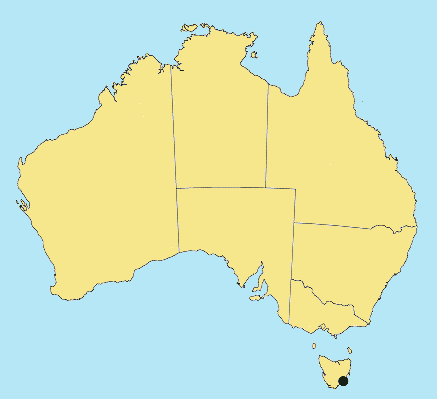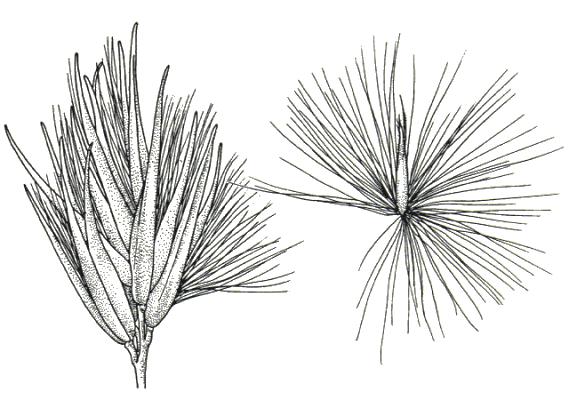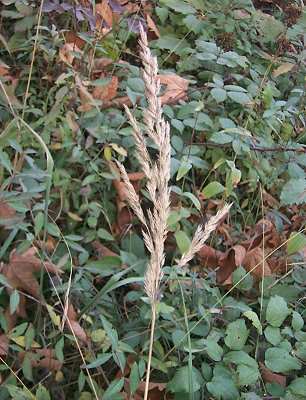Calamagrostis epigejos* (L.) Roth. .Tent. Fl. Germ. 1: 34 (1788).
Classification. (GPWG 2001) : Subfamily Pooideae. Tribe Poeae.
Basionym and/or Replacement Name: Arundo epigeios L., Sp. Pl. 1: 81. 1753.
Type of Basionym or Protologue Information: HT: (LINN (photo GH)).
Key references (books and floras): [2002] D.Sharp & B.K.Simon, AusGrass, Grasses of Australia, [2009] A.Wilson (ed.). Flora of Australia, Vol 44A. Poaceae 2 (237).
Illustrations: [2009]. A.Wilson (ed.), Flora of Australia 44A: Poaceae 2 (236, Fig.33).
Habit. Perennial. Rhizomes present, elongated. Culms erect, 60–200 cm tall, 2–3 -noded. Leaves cauline. Leaf-sheaths smooth, glabrous on surface. Ligule an eciliate membrane, 3–12 mm long, lacerate, truncate. Leaf-blades flat or involute, 10–70 cm long, 3–14 mm wide. Leaf-blade surface scaberulous, glabrous.
Inflorescence. Inflorescence solid, a panicle. Panicle lanceolate to oblong, 15–30 cm long, 3–6 cm wide.
Spikelets. Spikelets pedicelled. Fertile spikelets 1-flowered, comprising 1 fertile floret(s), without rachilla extension, lanceolate, laterally compressed, 4.5–7 mm long.
Glumes. Glumes similar, firmer than fertile lemma. Lower glume lanceolate, membranous, keeled, 1-keeled, 1 -nerved. Upper glume lanceolate, 4.5–5 mm long, membranous, keeled, 1-keeled, 1–3 -nerved.
Florets. Fertile lemma 2–4 mm long, without keel, 3 -nerved. Lemma apex dentate, awned, 1 -awned. Median (principal) awn dorsal, 3–4 mm long overall. Palea 2 -nerved. Lodicules present. Anthers 3. Grain 1 mm long.
Continental Distribution: Europe, Africa, Temperate Asia, Tropical Asia, Australasia, and North America.
Australian Distribution: Tasmania.
Tasmania: East Coast.



Notes. Recorded only near Copping in SE Tas. Native to Europe, Asia and Africa.
